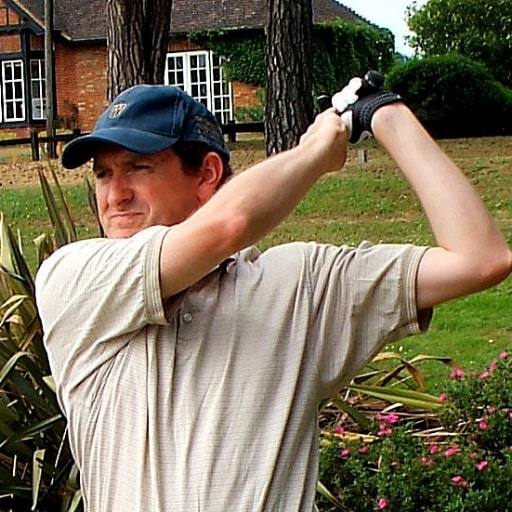What Size Is The Golf Hole – And Why?
We look at a golf hole at least 18 times during every round, but have you ever wondered why it's the size it is? The answer is all to do with a bit of drainpipe...


Early golf courses were basic affairs with little uniformity and how many holes each course had depended on the topography, with holes cut wherever there was a suitable area of level ground in the linksland. Nor were there the specifically constructed tee boxes of modern layouts; instead these pioneering golfers teed up within a club length of the previous hole. The hole itself was cut out by hand by the forefathers of what we now view as greenkeepers but who were called ‘hole cutters’.
The cutting of the hole was done with a trowel. Thus the size of a hole could vary not only between courses but across a course. It could also increase during the day. Tee shots were played off a pyramid of sand and an obvious source of sand on a course laid on sandy soil was from inside the hole itself. Players putting their hands into the hole to scoop out sand invariably meant the hole got damaged and enlarged during the course of play.
To prevent this, cups to line the holes were introduced, with the earliest known reference to hole liners in 1825 at Montrose. The use of hole cutters and hole cups brought uniformity to the size of the holes across an individual course. However, each course determined what size its holes would be. For example Royal Aberdeen had holes six inches in diameter; at Royal Musselburgh it was 4.25 inches. Thus the target area at Royal Aberdeen was about 78% larger than that at Royal Musselburgh.
Such differences were not to everyone’s liking as a letter writer to The Field magazine in 1888 shows: “My desire is to see a rule determining the size of the golf hole on all links. On Luffness the holes are so large and the putting green so good that a fair player will generally hole out from any distance short of three yards, while at Sandwich they are so small that they add at least five strokes to the round.”
There was no universal set of golf rules: each club has its own, much as clubs still have their own Local Rules today. The earliest surviving set of rules were those written by the Gentlemen Golfers of Leith in March 1744, for a tournament to be played the following month. Entitled Articles and Laws in Playing at Golf, they ran to 13 rules and 328 words.
The Gentlemen Golfers of Leith became The Honourable Company of Edinburgh Golfers, and their home course moved to Royal Musselburgh and then to Muirfield. They became part of the administration of The Open Championship. The Open had started at Prestwick, and the R&A and The Honourable Company of Edinburgh Golfers later became involved, with the host venue rotating between the courses of these three clubs. (It was not until 1920 that the R&A took sole charge of organising The Open.)
In 1829 Royal Musselburgh had paid a local blacksmith, Robert Gay, £1 for a device for “forming the hole”. This implement is now in the club museum. Before Robert Gay built his hole cutter, it is believed another tool was used to cut the holes at Royal Musselburgh, thought to be an old bit of drainpipe whose diameter happened to be 4.25 inches. As the club’s golfers had got used to this size of hole, that is the measurement Robert Gay was given.
Get the Golf Monthly Newsletter
Subscribe to the Golf Monthly newsletter to stay up to date with all the latest tour news, equipment news, reviews, head-to-heads and buyer’s guides from our team of experienced experts.
When the R&A came to draw up the first national rules of golf in 1891, it set a size for the diameter of the hole at 4.25 inches based on that bit of drainpipe at Royal Musselburgh all those years ago.
Contributing Writer Roderick is the author of the critically acclaimed comic golf novel, Summer At Tangents. Golf courses and travel are Roderick’s particular interests. He writes travel articles and general features for the magazine, travel supplement and website. He also compiles the magazine's crossword. He is a member of Trevose Golf & Country Club and has played golf in around two dozen countries. Cricket is his other main sporting love. He is also the author of five non-fiction books, four of which are still in print: The Novel Life of PG Wodehouse; The Don: Beyond Boundaries; Wally Hammond: Gentleman & Player and England’s Greatest Post-War All Rounder.
-
 'He Wouldn't Talk To Me' - Bryson DeChambeau Reveals Rory McIlroy Dynamic During The Masters Final Round
'He Wouldn't Talk To Me' - Bryson DeChambeau Reveals Rory McIlroy Dynamic During The Masters Final RoundAfter a disappointing Sunday at The Masters, DeChambeau shared that McIlroy was so focused en route to victory that the pair barely exchanged words all day
By Jonny Leighfield Published
-
 The 5 Rules I’ve Struggled With Most In My 40 Years As A Golfer
The 5 Rules I’ve Struggled With Most In My 40 Years As A GolferThere are some Rules that are easy to accidentally break and there are others that are difficult to accept. Here are five of them.
By Fergus Bisset Published